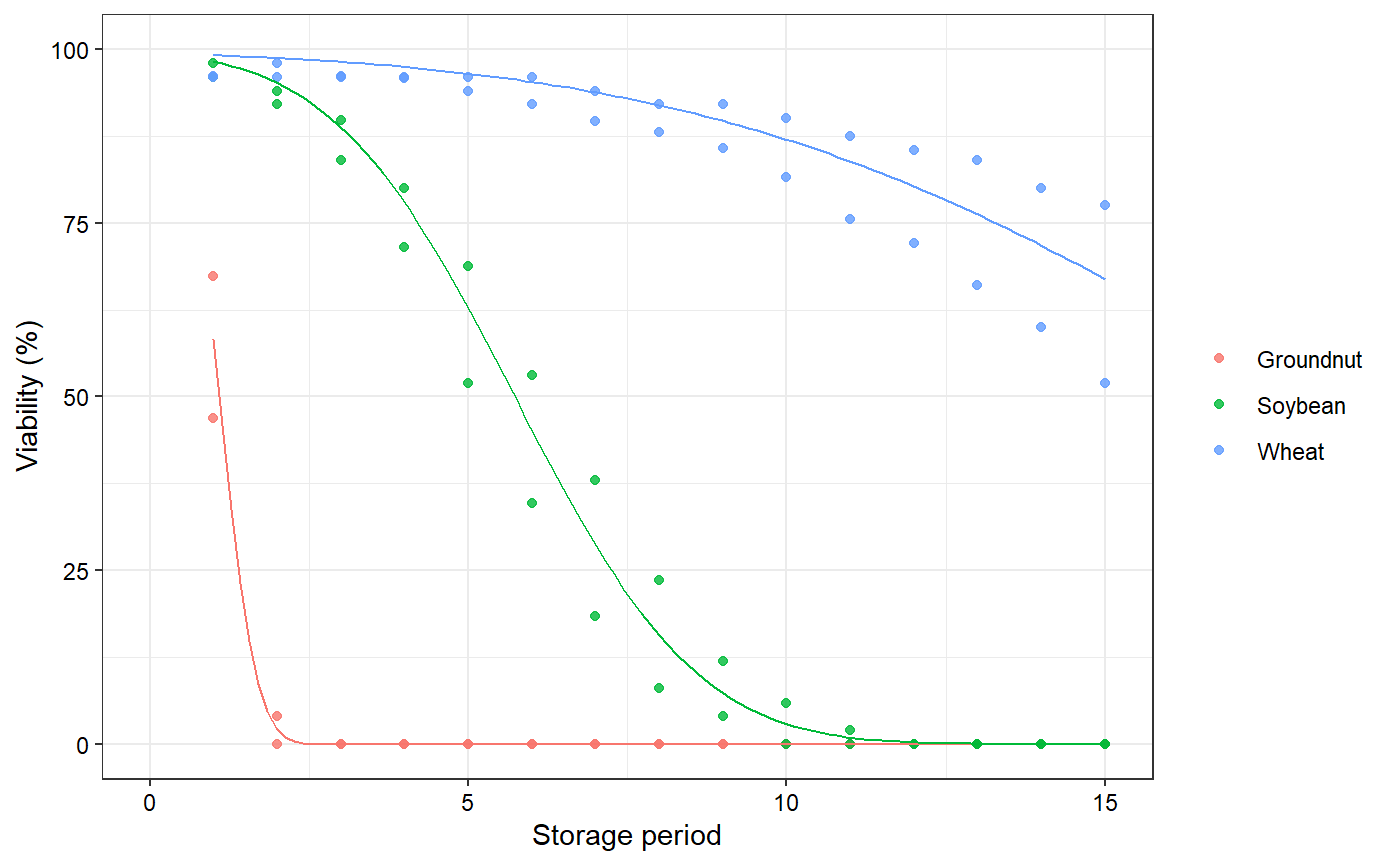Plot the fitted seed viability curves from a FitSigma.batch object
Source: R/plot.FitSigma.batch.R
plot.FitSigma.batch.Rdplot.FitSigma.batch plots the group-wise fitted seed
viability/survival curves from a FitSigma.batch object as an object of
class ggplot.
# S3 method for FitSigma.batch plot(x, limits = TRUE, grid = FALSE, ...)
Arguments
| x | An object of class |
|---|---|
| limits | logical. If |
| grid | logical. If |
| ... | Default plot arguments. |
Value
The plot of the seed viability curves as an object of class
ggplot.
See also
Examples
data(seedsurvival) df <- seedsurvival[seedsurvival$moistruecontent == 7 & seedsurvival$temperature == 25, c("crop", "storageperiod", "rep", "viabilitypercent", "sampsize")] #---------------------------------------------------------------------------- # Generalised linear model with probit link function (without cv) #---------------------------------------------------------------------------- model1a <- FitSigma.batch(data = df, group = "crop", viability.percent = "viabilitypercent", samp.size = "sampsize", storage.period = "storageperiod", generalised.model = TRUE)#>#>#>plot(model1a)#---------------------------------------------------------------------------- # Generalised linear model with probit link function (with cv) #---------------------------------------------------------------------------- model1b <- FitSigma.batch(data = df, group = "crop", viability.percent = "viabilitypercent", samp.size = "sampsize", storage.period = "storageperiod", generalised.model = TRUE, use.cv = TRUE, control.viability = 98)#> #>#> Warning: the condition has length > 1 and only the first element will be used#>#>plot(model1b)#> Warning: the condition has length > 1 and only the first element will be used#> Warning: longer object length is not a multiple of shorter object length#> Warning: longer object length is not a multiple of shorter object length#> Warning: the condition has length > 1 and only the first element will be used#> Warning: longer object length is not a multiple of shorter object length#> Warning: longer object length is not a multiple of shorter object length#---------------------------------------------------------------------------- # Linear model after probit transformation (without cv) #---------------------------------------------------------------------------- model2a <- FitSigma.batch(data = df, group = "crop", viability.percent = "viabilitypercent", samp.size = "sampsize", storage.period = "storageperiod", generalised.model = FALSE)#>#>#>plot(model2a)#---------------------------------------------------------------------------- # Linear model after probit transformation (with cv) #---------------------------------------------------------------------------- model2b <- FitSigma.batch(data = df, group = "crop", viability.percent = "viabilitypercent", samp.size = "sampsize", storage.period = "storageperiod", generalised.model = FALSE, use.cv = TRUE, control.viability = 98)#>#>#>plot(model2b)







